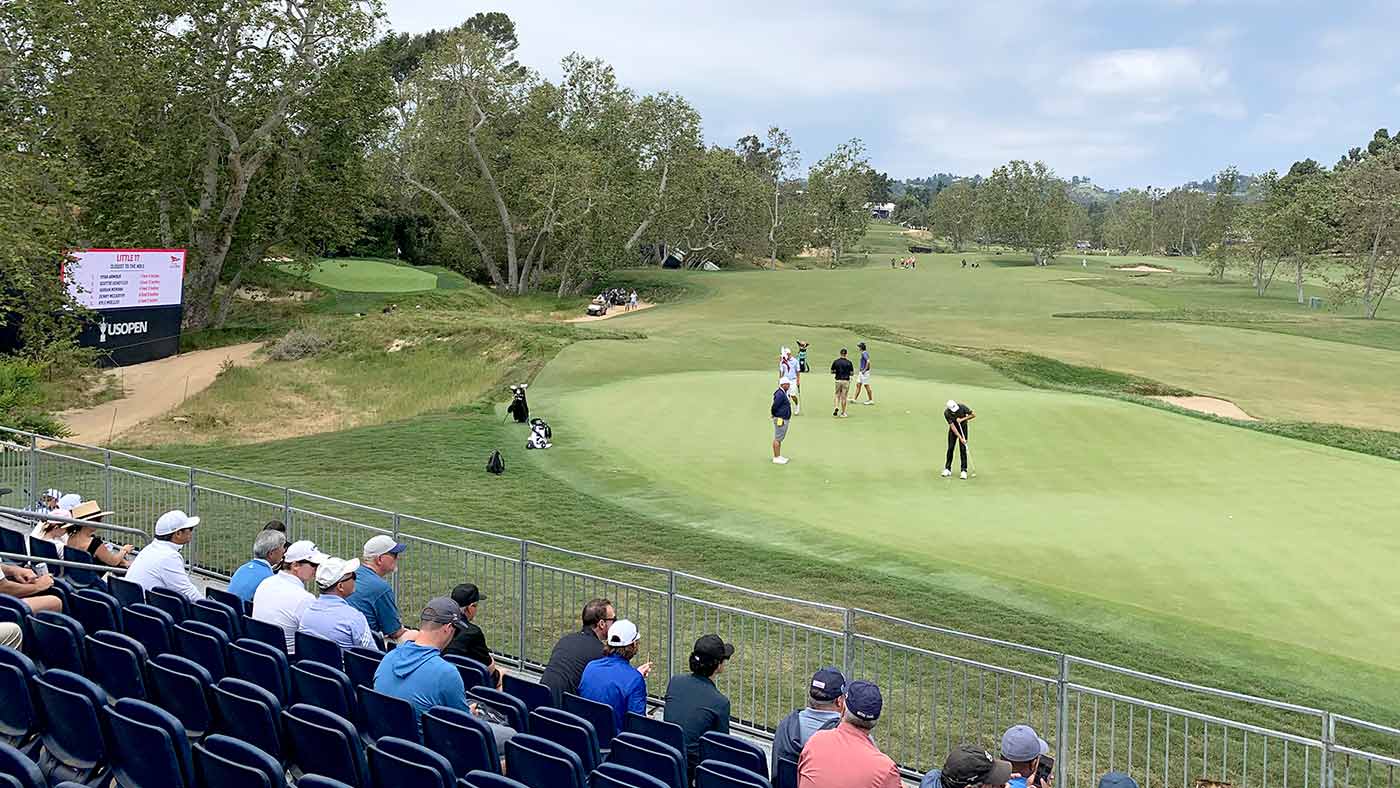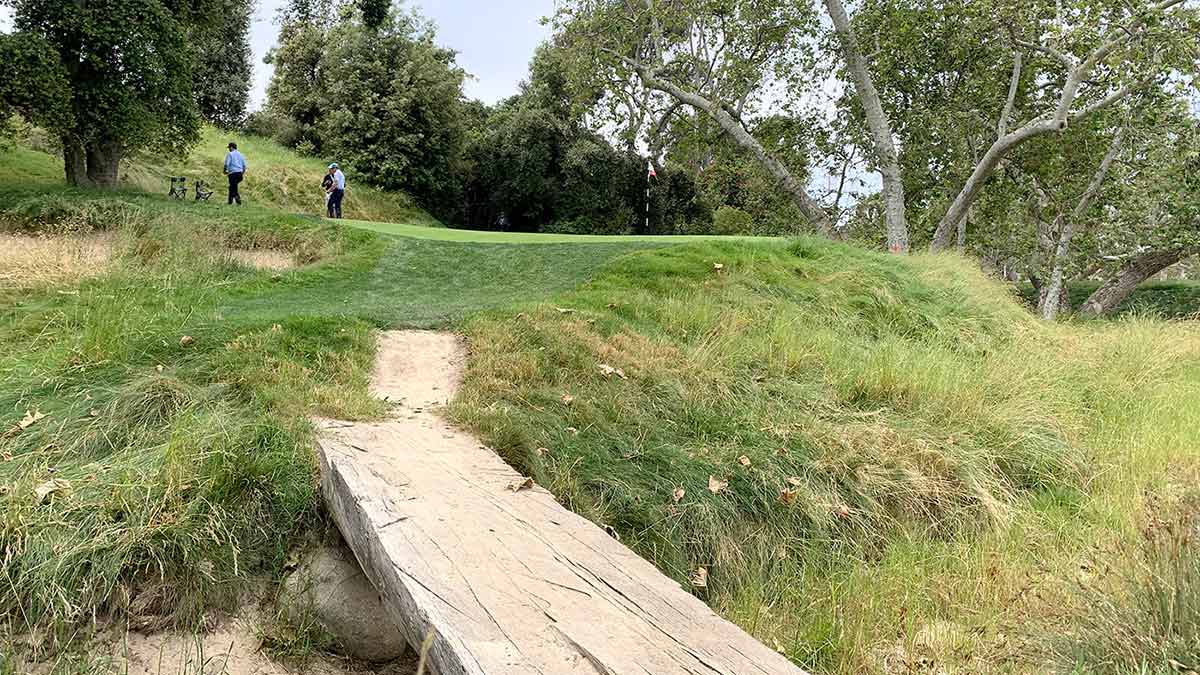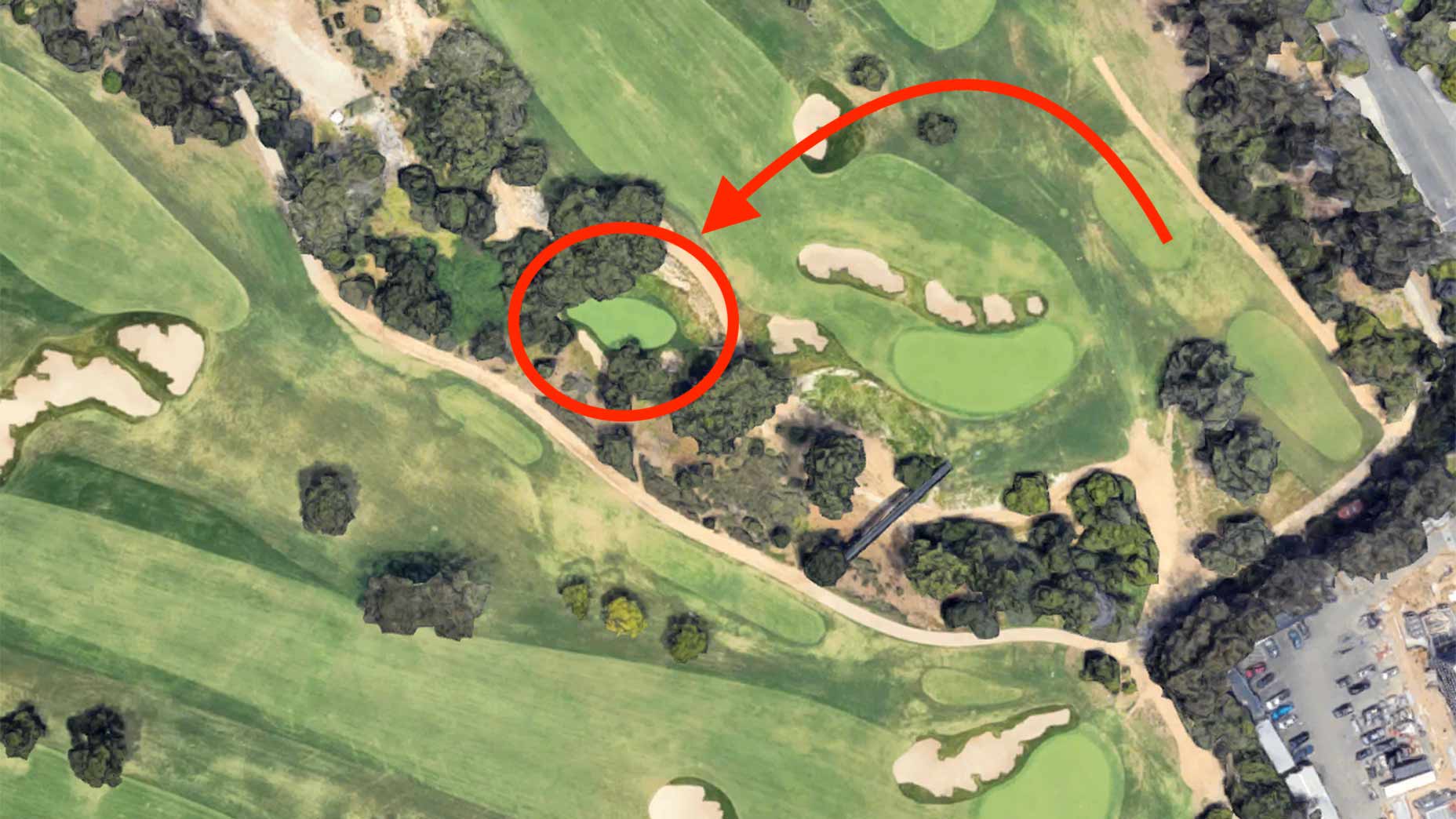LOS ANGELES — It’s not difficult to find now, but that “extra” or “bonus” or whatever-you-want-to-call-it hole near the 17th green at Los Angeles Country Club — for the record, members coined it “Little 17” — wasn’t always so prominent.
But it’s always been there, kind of.
George Thomas Jr. and Herbert Fowler designed LACC in 1921, and one of the most striking and noteworthy holes was the 120-yard par-3 17th on the North Course. Unfortunately, one round at the California Open might have cemented its future. Thomas was in charge of the course setup, and one morning he tucked the pin on the tiny green.
That’s when disaster struck. The green dried out, the wind picked up and players were left looking foolish trying to conquer the devilish hole.
Thomas wrote about the incident in his book, “Golf Architecture in America: Its strategy and construction.” He said there was a strategic way to play it in those conditions, but few players did so.

“Once in a very important Championship, I placed the cup on the left hand narrow side of a small, one-shot green,” Thomas wrote. “The shot was a pitch, and near the narrow shelf where the flag waved, there was danger both in front and behind the green; to hold the ball near the flag required a superlative shot. On the day of this medal round there was a gale of wind from right to left, and the green, which had been in fine condition the evening before, dried out during the night from the strong, dry wind. When the place commenced, there was only one safe line for that hole, which was to pitch to the right of the flag in the widened center of the green, where a shot of ordinary merit would hold. Yet in spite of these danger signals near the pin, man after man in that Championship played straight for it. Only a few thought enough about the speed of the ground to try the center path of safety.”
As the day went on, the wind continued and foot traffic made the green even faster. According to Thomas, news of the green’s treacherous slopes spread throughout the course, and eventually a gallery formed atop the hill overlooking the green, claiming a front-row seat to the madness. One player recorded an 8.
“The thing became exaggerated,” Thomas said.
According to Geoff Shackelford, who wrote Thomas’ biography, has written extensively about the old 17th and was a part of the North Course restoration, when Thomas and William Bell redesigned the North Course in 1927, the 17th had to go.

But, as Shackelford points out, Thomas clearly loved the hole, which is why it was never completely demolished (and why Thomas discussed it in length in his book and included several photos). It stayed there, but as the years passed on, few people knew it existed. The hole sat dormant, tucked in a corner between a couple of massive trees hard up against a hill leading to the 18th tee. Most members didn’t know it was there; some might have been tipped off by an old photo in the locker room.
“At the time it was a big deal, and I think he also regretted screwing up the course setup for the tournament, but it just didn’t work when he rearranged the golf course [in 1927],” Shackelford said. “It was a matter of logistics. They did abandon it, and you wouldn’t have destroyed it, but it’s interesting how much it was just there and left to kind of go to seed.”
Then came the North Course’s extensive 2010 restoration by Gil Hanse, Jim Wagner and Shackelford. The trio brought Thomas’ creation, including that forgotten 17th hole, back to life.
Shackelford, Hanse and Wagner jokingly volleyed the idea to revive the 17th, but the committee was intrigued.
“Let’s do it,” they said.

They got to work figuring out how to make it happen, but they wanted to be careful not to detract from the current 17th, a long par-4 with a bunker complex that starts well before its long, narrow green that’s best approached with a draw. They didn’t bring the green back to its original size since it would have inolved moving trees, but it’s still perfectly pushed up and ensconced in a corner of the course, just to the right of the 17th fairway and about 75 yards short of the green.
Dubbed “Little 17,” it’s now a huge part of LACC’s identity. There’s a makeshift tee box between the 17th green and 2nd tee — making it about a 105-yard shot — and the hole is always open for members to use. There’s a walkway up the hill behind it that leads players to the 18th tee box, so, if the course isn’t backed up, they can squeeze in Little 17 on their way to the finisher. Some members even come back to it post-round to settle bets.
“It’s a really fun thing for the members to be able to do, to come out here anytime we are playing the North Course,” said Davis Ford, an LACC member who was volunteering on Tuesday. “You know you have this fun little hole for us.”
Don’t be fooled by its cute name, though. You need precision to play Little 17 well. Deep bunkers and thick, gnarly rough await any miss.
“Everything about it is just kind of unusual, beautiful,” Shackelford said. “It’s a crazy little hole. Controversial, fun, and there was nothing like it in the day and there’s nothing like it now.”










